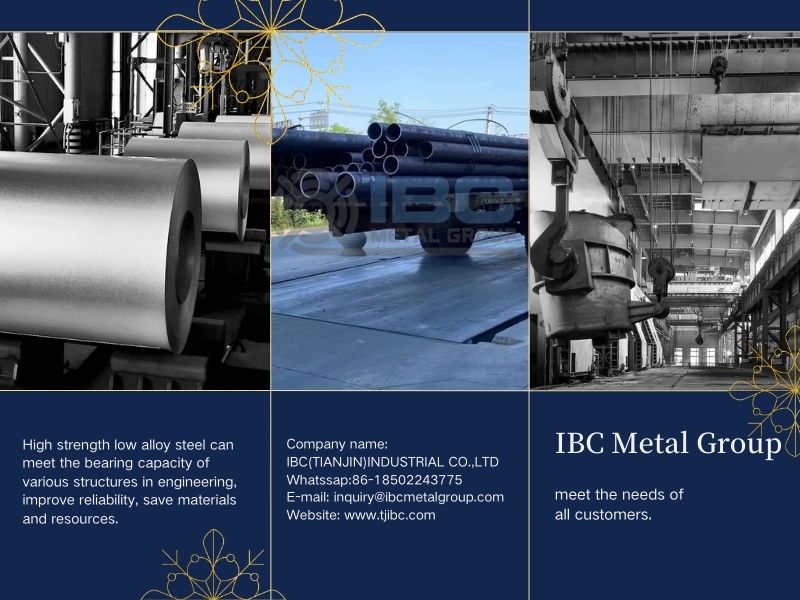According to scientific investigation, high strength low alloy steel can manufacture engineering structures with relatively high strength. For example, this type of steel is used in the production process of Bridges, ships, vehicles, high-pressure vessels, and oil pipelines. Because the steel can obtain higher strength without complex treatment or even heat treatment, it can generally replace carbon structural steel.

Ingredient of High Strength Low Alloy Steel
1.The proportion of carbon elements is low: In order to meet the process requirements of plasticity, toughness, weldability and cold deformation of engineering structural parts, this steel contains very little carbon element.
2.Low alloying element content: In the process of making this kind of steel, a small amount of alloying element based on manganese is mainly added. So as to achieve the purpose of improving mechanical properties. Manganese can not only strengthen the iron element significantly, but also reduce the cold quenching temperature of steel.
3.Other elements: Sometimes the rare earth element Re can also be added to this type of steel to eliminate harmful impurities in the steel. It can also improve the shape and distribution of inclusions and weaken their cold brittleness.

Performance Feature
1.High strength: This is the most significant feature of high strength low alloy steel. In the hot rolled or normalizing state, it can be 50% harder than the average carbon engineering structural steel. Such good performance can greatly improve the compactness of engineering components, so that their reliability is greatly improved.
2.Good weldability: The steel in the engineering structure requires good weldability. And the steel we say has few alloying elements and good plasticity. And it is not easy to produce prompt organization and cracks in the weld zone. In addition, this type of steel is generally not heat treated after welding.
3.Atmospheric corrosion resistance: Most engineering structures are in service in the ocean or the atmosphere. A small amount of copper, nickel, chromium and other elements added to this steel can effectively improve the ability of engineering structures to resist atmospheric, seawater or soil corrosion. Among them, the effect of copper and phosphorus added to the material at the same time is better.

Contact with us today!



